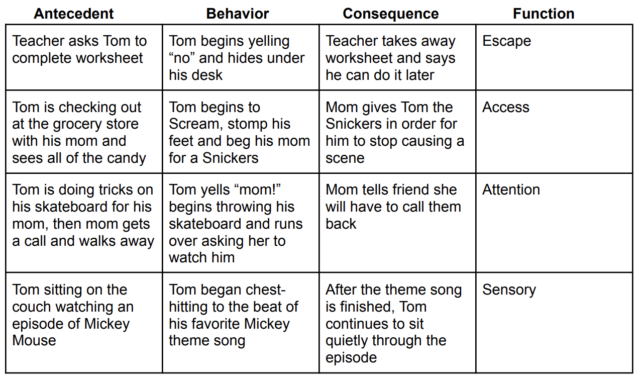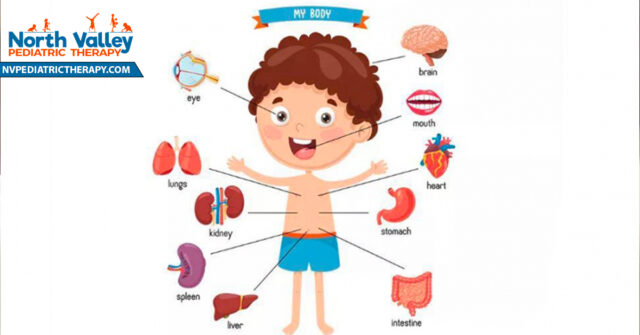Nothing even happened and they just started having a meltdown”. There is always a reason why a child is engaging in challenging behavior, we just have to figure it out!
Every instance of behavior has 3 common components, Antecedent, Behavior, and Consequence. The ABCs of behavior are beneficial when determining the functions of behavior. There are 4 main reasons challenging behaviors occur:
1.) To escape or avoid an undesirable situation – ex. Avoid taking a bath
2.) To get social attention (positive or negative) – ex. Receiving a hug or a reprimand
3.) To gain access to a desired item/activity – ex. Receive a cookie or be able to go outside and play
4.) To access sensory input – ex. Enjoying the feeling simply because it feels good
A- Antecedent: This is what exactly happened right before the child began engaging in the specific behavior. Did something specific provoke or cause the behavior in question? Did it appear to “happen out of nowhere?” When identifying the antecedent it is also important to consider:
1.) Where the behavior occurred
2.) Who was around during the behavior
3.) What was happening within the child’s environment
B- Behavior: This is anything someone does. Behaviors are observable and able to be analyzed, such as shaking one’s head, yelling “no” or throwing a block. The behavior being observed and identified doesn’t always have to be challenging; For example, it could be shouting, “Hoorary!” in excitement. It is as simple as how the individual reacts to the antecedent.
C- Consequence: This is what happens immediately following the behavior(s). The consequence can either increase (reinforce) or decrease (punish) the behavior being observed. The consequence may be delivered by the individual themselves, by another individual, or by the environment/community.
The following is an example of what ABC recording looks like with the added function of behavior for challenging behavior.

The following is an example of what ABC recording looks like with appropriate behavior:

Once you are able to identify the potential function of the behavior, it is important to consider if a replacement behavior is necessary for the behavior in question – this is particularly important for challenging behaviors. For example, if attention seems to increase problem behavior, then it may be important to teach the individual to get attention in a more appropriate fashion or to use attention for positive behaviors. If escape from a difficult task seems to be a consistent theme in the consequence section, then it may be important to either change the task or to teach the child to ask for help. If the behavior seems to serve a sensory function, then we should assess the child’s sensory challenges and build in sensory programming proactively. Our responses should always focus on strengthening desired behavior, promoting the use of the replacement behavior, and decreasing the occurrence of the problem behavior (Sugai, et. al., 2000).
Dubie M. & Pratt, C. (2022). Observing behavior using a-b-c data. Retrieved from https://www.iidc.indiana.edu/irca/articles/observing-behavior-using-a-b-c-data.html
Sugai, G., Horner, R.H., Dunlap, G., Hieneman, M., Nelson, C.M., Scott, T., Liaupsin, C., Sailor, W., Turnbull, A.P., Turnbull III, H.R.; Wickham, D., Wilcox, B., and Ruef, M. (2000). Applying positive behavior support and functional behavioral assessment in schools. Journal of Positive Behavior Interventions, 2(3), 131-143.
Blog by: Nikki C. (MS, RBT – Registered Behavior Technician)




